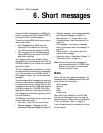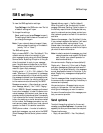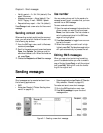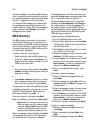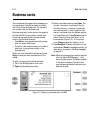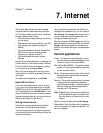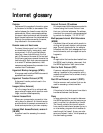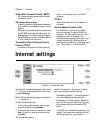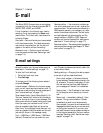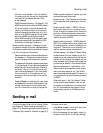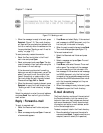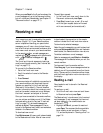
7-2
Internet glossary
Cookies
Cookies are little nuggets of information, given
by the server to the user, to store session infor-
mation between the times the user visits the
same web site. When a user accepts cookies,
the server is able to store and use information
about the user’s actions on the visited web site.
Although the cookies are used by the server,
they are stored in the communicator.
Domain name and Host name
The terms “domain name” and “host name”
are sometimes, slightly inaccurately, used
synonymously. In a fully qualified domain
name (e.g., www.club.nokia.com), the first
part of the name is the name of the host and
the following parts are names of domains the
host belongs to. Each host name corresponds
to a certain IP address (see below). Host
names are used because they are easier to re-
member than IP addresses.
Hypertext Markup Language (HTML)
A language used to define WWW documents’
appearance and content.
Hypertext Transfer Protocol (HTTP)
A document transfer protocol used in the
WWW system.
Images (Inline, External)
An inline image lies within a retrieved web
page; external images, which are often much
larger, must be viewed separately.
Internet Access Point
Where your communicator connects to Inter-
net by way of a data call. An Internet service
provider can be, for example, a commercial In-
ternet service provider or your own company.
Internet Mail Access Protocol, version 4
(IMAP4)
A protocol used for accessing the remote
mailbox.
Internet Protocol (IP) address
All computers and other devices connected to
Internet using the Internet Protocol have
their own individual addresses. The address
consists of four groups of numbers separated
by periods: for example, “131.227.21.167.”
Multipurpose Internet Mail Extensions
(MIME)
A standard Internet format which permits in-
cluding multiple mail objects in a single mes-
sage. The mail objects can be, for example,
formatted multifont text messages and non-
textual elements, such as images and audio
fragments.
Plug-in
An application that can be downloaded from
the WWW, used to display a document that
the WWW application itself cannot show.
Point to Point Protocol (PPP)
A common networking software protocol
making it possible for any computer with a
modem and a phone line to connect directly
to the Internet.
Post Office Protocol, version 3 (POP3)
Another common mail protocol that can be
used for accessing a remote mailbox.
Protocol
A formal set of rules that govern how data is
transferred between two devices.
Proxy
In some networks, the connection between
the WWW application and the resource you
want to connect to is blocked by a firewall.
The firewall protects the internal network
from unauthorized external access. A proxy is
an intermediary program which enables ac-
cess through the firewall. A proxy can also
serve as a network “cache,” which speeds up
the downloading process.




